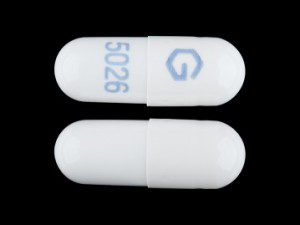
Gabapentin
Poison control centers around the country are receiving a growing number of calls about the abuse of the drugs gabapentin and pregabalin, which are prescribed to treat seizures and nerve pain. Abuse of these drugs has increased fourfold since 2006, new research indicates.
“It’s quite striking,” said Richard C. Dart, MD, PhD, the Director of the Rocky Mountain Poison and Drug Center and the Executive Director of Researched Abuse, Diversion, and Addiction-Related Surveillance (RADARS) System. “The fact that the abuse is increasing so abruptly is concerning.”
It seems that many people who are abusing gabapentin and pregabalin are using or abusing opioids as well, Dr. Dart said. “The problem is getting new-found attention, but we suspect it has been there for awhile and we just didn’t realize it.”
Dr. Dart presented data from the National Poison Data System on abuse of the two drugs at the recent annual meeting of the College on Problems of Drug Dependence. He found that the rate of abuse of the drugs in the first quarter of 2006 was 0.0144 per 100,000 population. The rate jumped to 0.0618 per 100,000 in the fourth quarter of 2014—a 4.3-fold increase.
Callers to poison control centers are asked why they ingested the substance they are calling about, Dr. Dart explained. “The cases we looked at involved people who abused gabapentin or pregabalin—they took it at a party, or said they took it to get high.”
These drugs are often prescribed off-label for other pain syndromes, anxiety and mood disorders, restless legs syndrome, alcohol withdrawal and other conditions. They work by decreasing the number of pain signals sent out by damaged nerves in the body.
“Our initial impression is that gabapentin and pregabalin are almost always not being abused alone—an opioid of some type is usually involved,” he said. “We’re not really sure why people are abusing these drugs with opioids,” he added. “It may modify their experience in a way they find desirable.” He noted that it is common for people abusing opioids to also use sedative drugs, such as benzodiazepines. “Gabapentin may be another alternative to benzodiazepines,” he said.
He noted that gabapentin (Neurontin) is available as a generic drug in the U.S. Pregabalin (Lyrica) is not. Pregabalin is better absorbed than gabapentin, Dr. Dart noted.
“It’s not clear if a person can become addicted to one of these drugs,” he said. “We’re looking at that now. It’s tough to find out, because in so many cases people are taking them with opioids, and it is hard to differentiate.” Both drugs may enhance the effects of opioids, which may increase the risk of opioid overdose, Dr. Dart said.
The study found of 4,152 intentional abuse cases involving the two drugs, 54.9 percent of callers were male, with a median age of 30. Only 32 percent of the exposures involved a single substance.